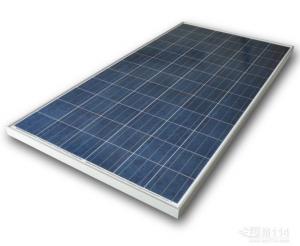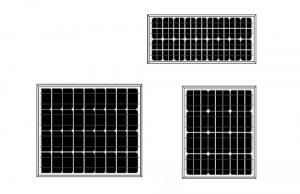Monocrystalline Solar Panels 370W JAM6(BK) 60 245-265W
- Loading Port:
- Shanghai
- Payment Terms:
- TT or LC
- Min Order Qty:
- 360 watt
- Supply Capability:
- 100000 watt/month
OKorder Service Pledge
OKorder Financial Service
You Might Also Like
JAM6(BK) 60 245-265W MONOCRYSTALLINE SILICON MODULE
Key futures:
Aesthetically appealing with black frame and backsheet suited for residential .commercial utility applications.
Anti-reflective and anti-soiling surface reduces power loss from dirt and dust;
outstanding prformance in low-light irradiance environments;
excellent mechanical load resistance:certified to wothstand high wind loads (2400pa)and snow loads(5400pa)
high salt and ammonia resistance certified by TUV NORD
Datasheet:


FAQ
We have organized several common questions for our clients,may help you sincerely:
①How about your company?
CNBM Solar photovoltaic (PV) Panel has various wattage from 1.5W to 315W to meet the demand of every customer. It is the optimal choice for both on-grid and off-grid power systems. CNBM Solar panel offers high performance of power warranty and good after sale service, we have professional people to reply your problem anytime.
CNBM International Corporation's products including Monocrystalline Solar Panel, Polycrystalline Solar Panel have received and enjoyed famous reputation in many countries and regions in the world .As a solar panel supplier in China, we strive to provide our customers with excellent service, superior products and unmatched value.
②How to guarantee the quality of the products?
CNBM Solar performance guarantees for 25 years
• 12 years guarantee for workmanship
• Timeliness of delivery
• Quality Products certified (TÜV, UL, CE, ISO)
③How long can we receive the product after purchase?
In the purchase of product within three working days, We will arrange the factory delivery as soon as possible. The pecific time of receiving is related to the state and position of customers.Commonly 7 to 10 working days can be served.
- Q: Can solar panels be installed on a farm or agricultural facility?
- Yes, solar panels can be installed on a farm or agricultural facility. In fact, many farmers and agricultural facilities are increasingly adopting solar energy as a sustainable and cost-effective solution to meet their energy needs. Solar panels can be installed on roofs, open fields, or unused land, providing clean and renewable energy while minimizing the environmental impact. Additionally, solar installations on farms can help reduce electricity costs, improve energy independence, and contribute to a greener and more sustainable farming practice.
- Q: Can solar panels be used on commercial buildings?
- Yes, solar panels can be used on commercial buildings. In fact, many businesses are increasingly installing solar panels on their rooftops to generate clean and sustainable energy. This helps them reduce their reliance on traditional energy sources, lower their electricity bills, and contribute to a greener environment. Additionally, government incentives and tax benefits often make solar panel installations a financially viable option for commercial buildings.
- Q: i have a small solar panel,the ones from a garden lamp that turns on at night-i think.what i was wondering is can i just connect the solar panel to a capacitor and then a light just to test?or do i need something to convert the solar energy to usable energy?and how do i tell if a capacitor is broken?
- solar panels for those lights provide the power directly to the light, so there is no capacitor used or needed. in any event, capacitors very rarely break but you would need an OHM meter to test it.
- Q: Can solar panels be used in areas with high levels of air pollution?
- Yes, solar panels can be used in areas with high levels of air pollution. While air pollution can reduce the efficiency of solar panels to some extent, they can still generate electricity even in polluted environments. However, regular cleaning and maintenance may be required to ensure optimal performance and to prevent the buildup of pollutants on the panels' surface.
- Q: Can solar panels be used in areas with high levels of salinity or brackish water?
- Yes, solar panels can be used in areas with high levels of salinity or brackish water. However, it is important to consider the potential impact of corrosion on the panels and their components. Proper installation techniques, regular maintenance, and the use of corrosion-resistant materials can help mitigate the effects of salinity and brackish water on solar panel performance.
- Q: Can solar panels be installed on a multi-story building?
- Yes, solar panels can be installed on a multi-story building.
- Q: Can solar panels be installed on a stadium or sports arena?
- Yes, solar panels can be installed on a stadium or sports arena. Many stadiums and sports arenas around the world have already installed solar panels to generate renewable energy. The large roof spaces and ample sunlight exposure make them ideal locations for harnessing solar power.
- Q: How could I find out what the amp output of a solar panel? Specifically, I want to know how many milliamps can the solar panel on a Casio fx-260 put out?
- You need full sunshine from the sun, or a lamp that will give a light spectrum similar to the sun, a volt meter, Milli-amp meter, and a variable resistor of 0 to 000 ohms. The voltmeter test leads go across the solar cell leads. The amp meter leads will be in series with the solar cell. Let's say, positive lead of the solar cell to the the positive lead of the amp meter, the negative lead of the amp meter to one terminal of the variable resistor, and the wiper terminal of the variable resistor to the negative lead of the solar cell. Slowly decrease the value of the resistor until the voltage from the solar cell just begins to drop. Take note of the amp meter reading. This is about the high end range of the solar cell. You might want to begin with a micro-amp meter for the current meter.
- Q: Can solar panels generate electricity during a blackout?
- No, solar panels cannot generate electricity during a blackout. This is because most solar panel systems are grid-tied and rely on the electricity from the power grid to function. When there is a blackout, the grid-tied solar panels automatically shut off to prevent any electricity from flowing back into the grid, in order to protect utility workers who may be repairing the power lines. However, it is possible to have a backup battery system installed along with the solar panels, which can store excess energy and provide electricity during a blackout.
- Q: How do solar panels affect the local economy?
- Solar panels can have a positive impact on the local economy in several ways. Firstly, the installation and maintenance of solar panels create job opportunities, boosting employment rates in the area. Additionally, the production and sale of solar panels contribute to the growth of local businesses, stimulating economic activity. Moreover, solar energy reduces reliance on traditional energy sources, leading to lower energy costs for businesses and households, resulting in increased disposable income for residents. This, in turn, can spur consumer spending and support local businesses. Overall, solar panels can drive economic growth, job creation, and cost savings within the local economy.
Send your message to us
Monocrystalline Solar Panels 370W JAM6(BK) 60 245-265W
- Loading Port:
- Shanghai
- Payment Terms:
- TT or LC
- Min Order Qty:
- 360 watt
- Supply Capability:
- 100000 watt/month
OKorder Service Pledge
OKorder Financial Service
Similar products
Hot products
Hot Searches
























